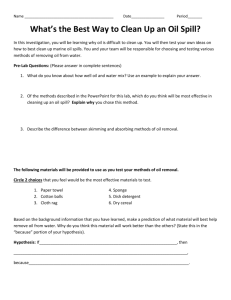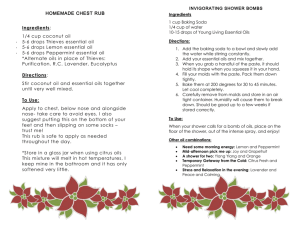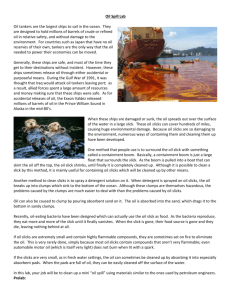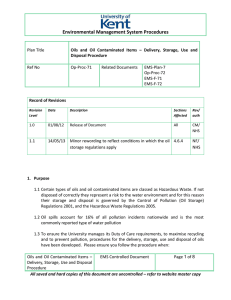ESI oil types
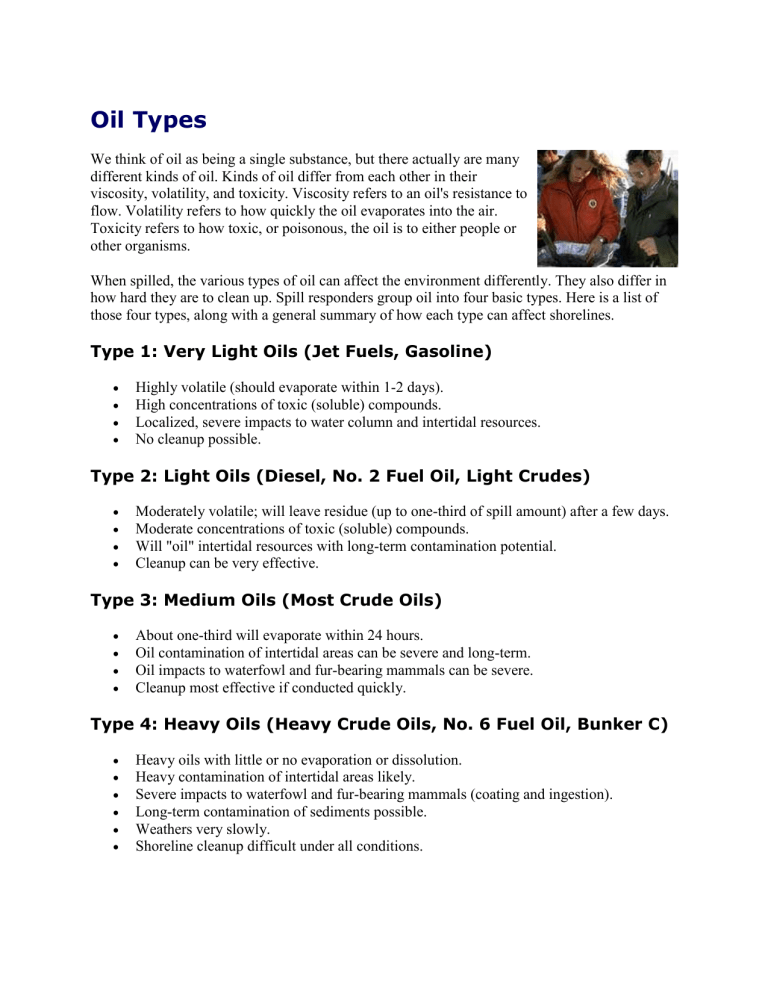
Oil Types
We think of oil as being a single substance, but there actually are many different kinds of oil. Kinds of oil differ from each other in their viscosity, volatility, and toxicity. Viscosity refers to an oil's resistance to flow. Volatility refers to how quickly the oil evaporates into the air.
Toxicity refers to how toxic, or poisonous, the oil is to either people or other organisms.
When spilled, the various types of oil can affect the environment differently. They also differ in how hard they are to clean up. Spill responders group oil into four basic types. Here is a list of those four types, along with a general summary of how each type can affect shorelines.
Type 1: Very Light Oils (Jet Fuels, Gasoline)
Highly volatile (should evaporate within 1-2 days).
High concentrations of toxic (soluble) compounds.
Localized, severe impacts to water column and intertidal resources.
No cleanup possible.
Type 2: Light Oils (Diesel, No. 2 Fuel Oil, Light Crudes)
Moderately volatile; will leave residue (up to one-third of spill amount) after a few days.
Moderate concentrations of toxic (soluble) compounds.
Will "oil" intertidal resources with long-term contamination potential.
Cleanup can be very effective.
Type 3: Medium Oils (Most Crude Oils)
About one-third will evaporate within 24 hours.
Oil contamination of intertidal areas can be severe and long-term.
Oil impacts to waterfowl and fur-bearing mammals can be severe.
Cleanup most effective if conducted quickly.
Type 4: Heavy Oils (Heavy Crude Oils, No. 6 Fuel Oil, Bunker C)
Heavy oils with little or no evaporation or dissolution.
Heavy contamination of intertidal areas likely.
Severe impacts to waterfowl and fur-bearing mammals (coating and ingestion).
Long-term contamination of sediments possible.
Weathers very slowly.
Shoreline cleanup difficult under all conditions.
Spill Containment Methods
During a spill response, sensitive locations threatened by an advancing oil slick can be protected with various kinds of equipment and tactics:
Booms are floating barriers to oil, made of plastic, metal, or other materials. They are commonly placed
across a narrow entrance to the ocean, such as a stream outlet or small inlet (like Roosevelt Inlet, in this exercise), to close off that entrance so that oil can't pass through into marshland or other sensitive habitat. in places where the boom can deflect oil away from sensitive locations, such as shellfish beds or, in this exercise, beaches used by piping plovers as nesting habitat.
Around a sensitive site, to prevent oil from reaching it. In the photo at left, boom surrounds a set of floating net pens at a salmon hatchery in Prince
William Sound, Alaska, to protect the pens from oil spilled from the Exxon Valdez.
Skimmers are boats and other devices that can remove oil from the sea surface before it reaches sensitive areas along a coastline. In the photo at right, oil is being skimmed from the sea surface. Two boats are towing a collection boom, while oil concentrated within the boom is being picked up by the skimmer (the vessel at the apex of the boom).
If local authorities and response experts agree, other possible--but more controversial--measures responders might consider include (see reverse)
In-situ burning of an oil slick, or part of a slick, before it reaches the coast. To do this, responders corral some of the oil from the slick in a fire-proof boom, then ignite it (as has been done in the photo to the right). This technique works best when the oil is fresh and the weather relatively calm.
Using aircraft or boats to apply dispersants
(chemicals that disperse the oil into the water column, so that much less stays at the surface, where it could affect beaches and tideflats). The photo at left shows a boat applying dispersant
Spill response experts know that all of these methods are effective only when conditions are conducive to using them.



